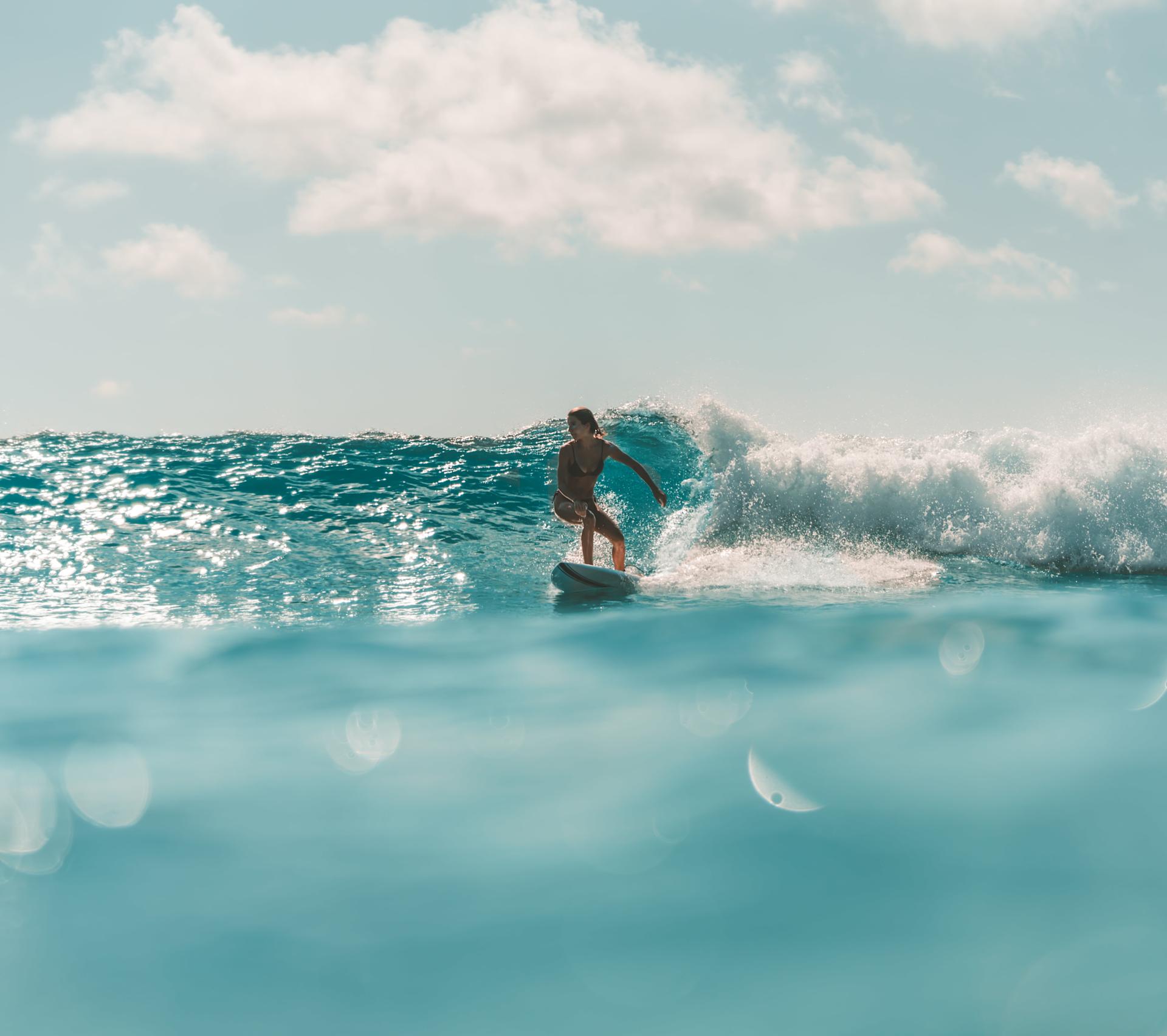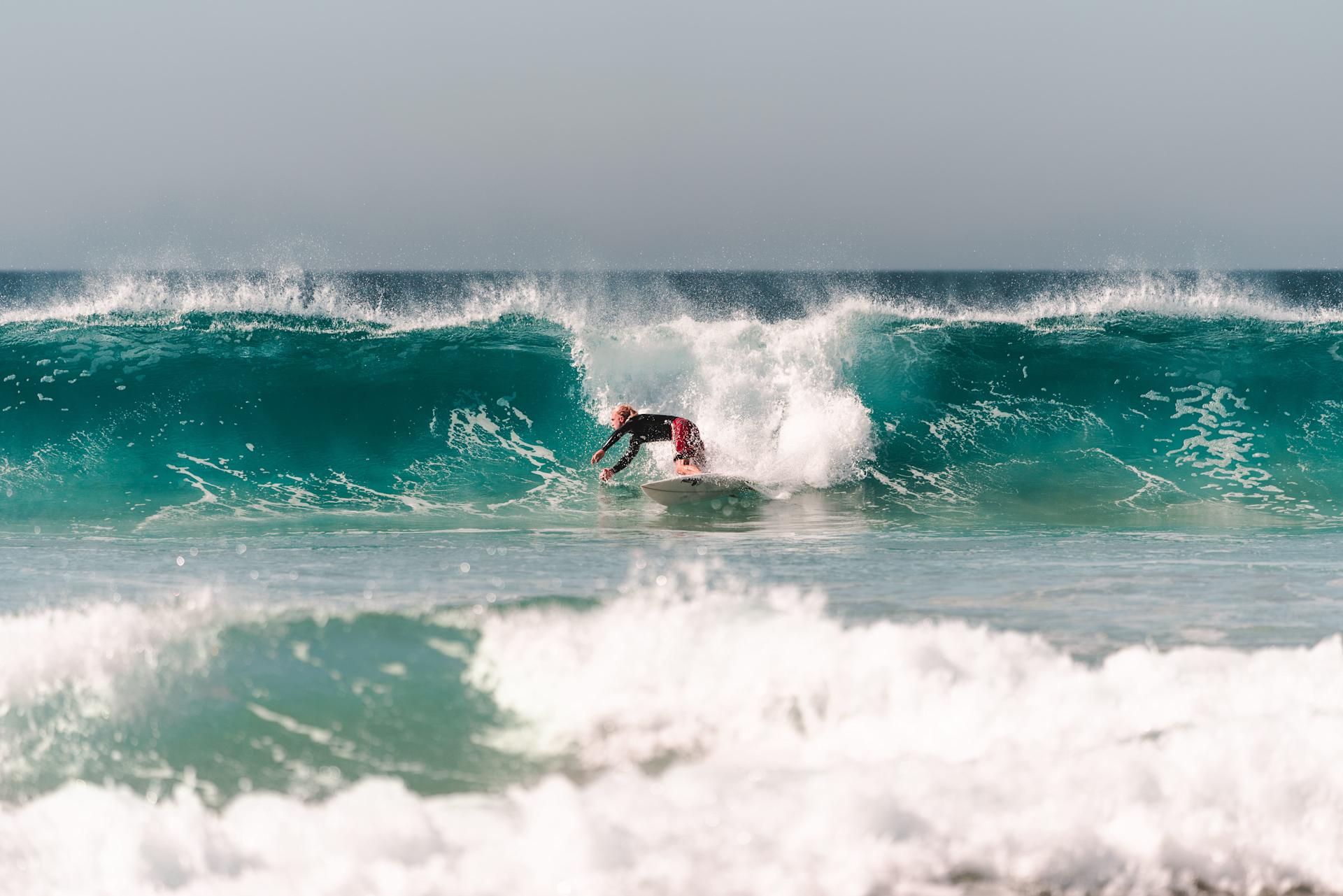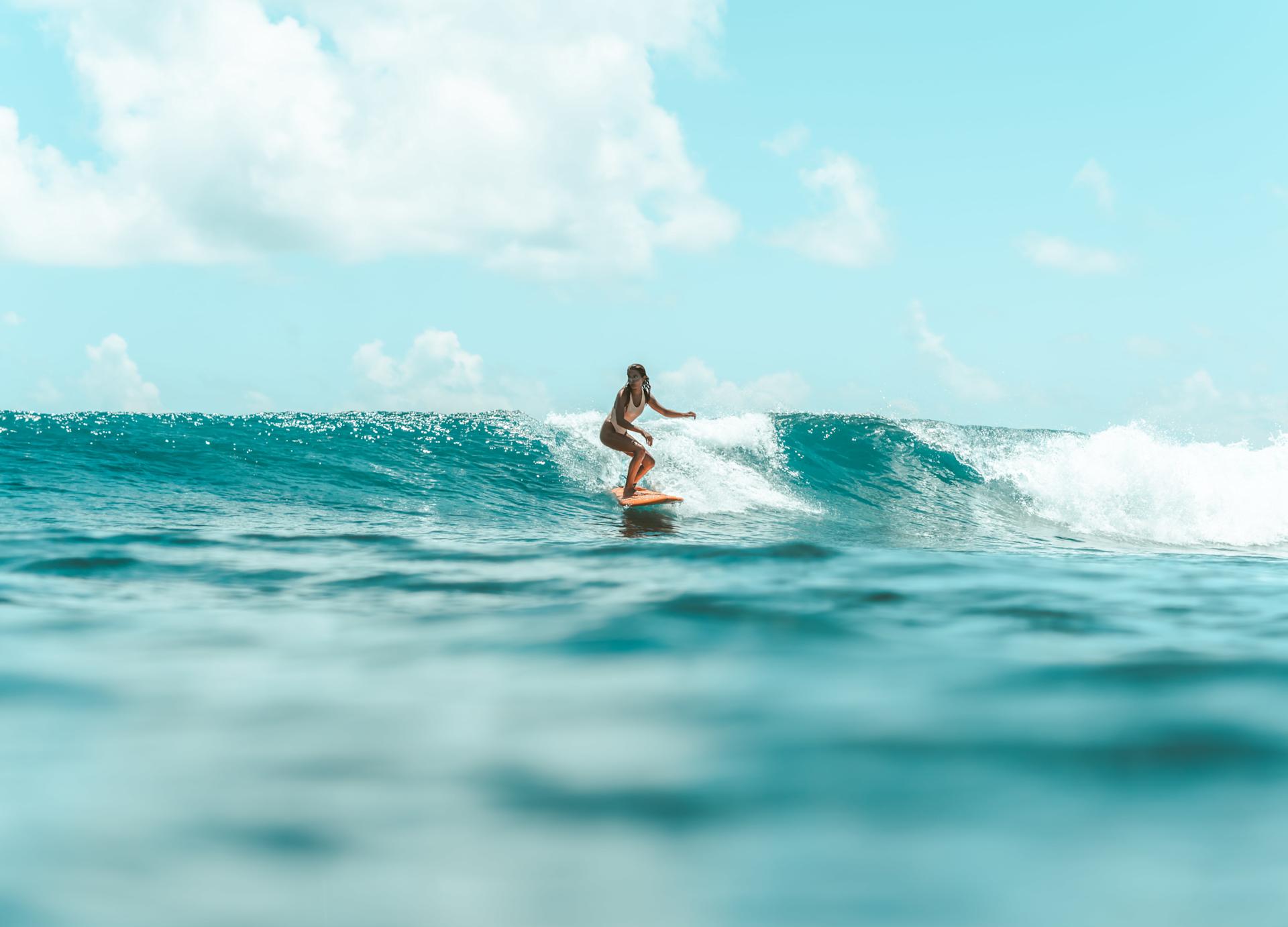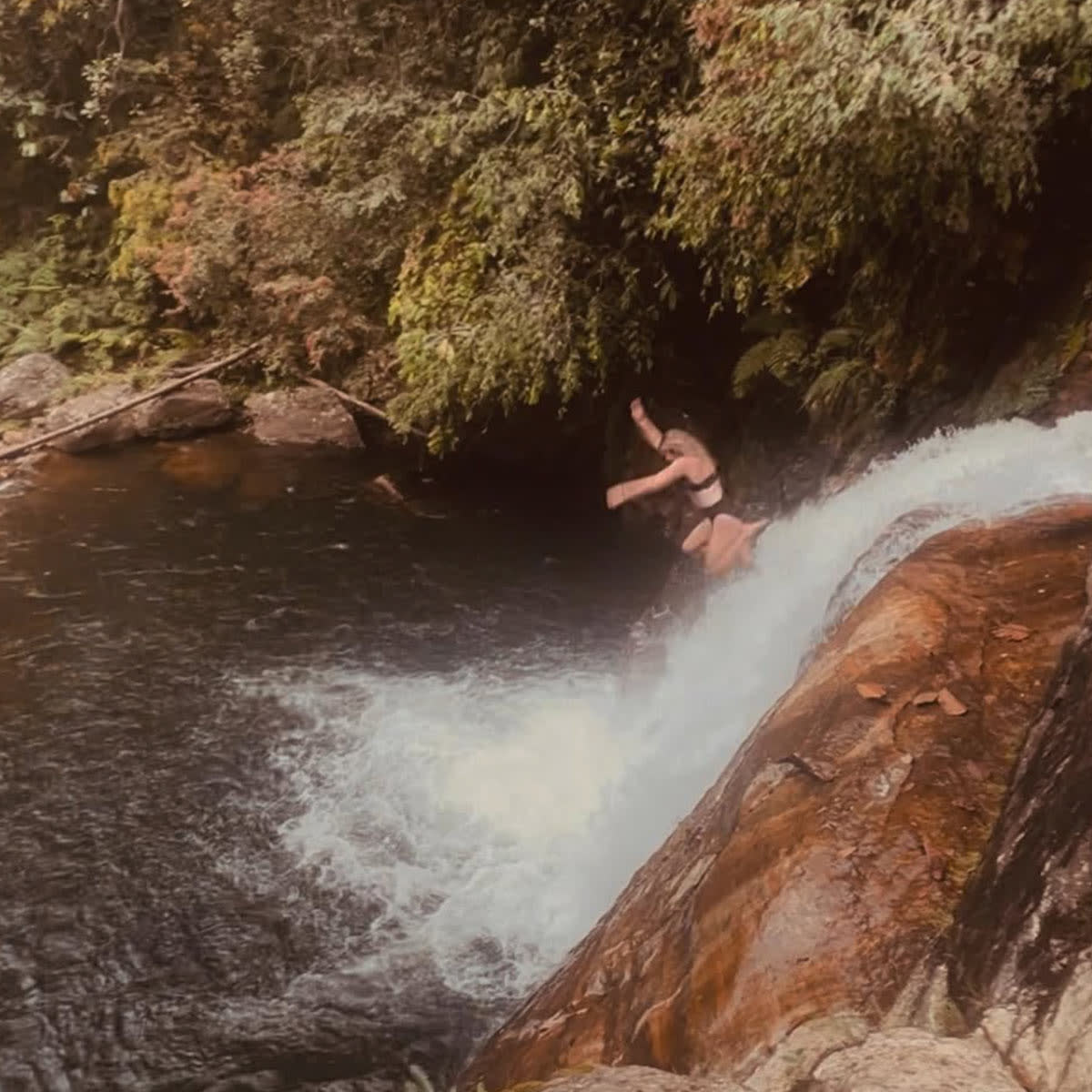
The best advanced surfing tips and techniques to master your bottom turn
June 30, 2025A key part of advancing your surfing is to improve the bottom turn. It’s not uncommon that even advanced surfers struggle with their bottom turns from time to time. Practising and improving your bottom turn is a great way to take your surf skills to the next level. So how exactly do you get better at bottom turns then? Which surf tutorial should you watch and how do you do a bottom turn on a longboard? Settle in, here’s everything you need to know!
The bottom turn is arguably the foundation block of performance surfing. The technique is so important to master since it prepares the surfer for pretty much all the manoeuvres you can make on the face of the wave. This is a technique that you can practice and improve for years.
How to do a bottom turn

Let's get back to basics: a bottom turn is a turn you make when you get to the bottom of the wave (duh). This will provide the energy and speed for you to make the manoeuvres you want later on in the wave. According to Barefoot Surf Travel, the definition of a bottom turn is: “a smooth, powerful turn at the bottom of the wave that transforms vertical energy into horizontal energy, in a way that provides you the proper speed and direction for a manoeuvre on the wave”.
Your bottom turn can either beforehand; where the surfer’s chest is facing the wave at the bottom. Or backhand; where the surfer’s back is facing the wave at the bottom turn.
There are different levels of bottom turns:
Minor bottom turn: also called shallow bottom turn, are common on soft shoulder waves and are often followed with manoeuvres like cutbacks and top turns.
Major bottom turn: also called the deep bottom turn, this turn is tighter than the minor bottom turn and is often used when the manoeuvres are more advanced. Often followed by manoeuvres like barrels, airs and snaps.
The minor bottom turn brings the surfer more diagonally to the shoulder/face of the wave. While the major bottom turn brings the surfer more vertically up the wave. The type of bottom turn you should do depends on the wave in question and on your skill level.
Tips and techniques — here’s how to improve your bottom turn

Okay, now we’re all set on the basics. But how do we improve the bottom turn? There are many pieces that need to be put together when improving your bottom turn. It's not just practising the actual turn; the wave condition, the board you use and your timing all plays a role here.
So we asked João Durão (the surfer in the photo), the Global surf manager of our camps, for his tips top ten tips:
1. Use a bigger board
– Start with a bigger (thicker) board to perfect your rail work, pay attention to your feet' placement and pressure.
When performing a bottom turn it’s important to not put too much of your weight on the front foot since that can stall your board or make you fall into the wave.
2. Surf the pocket
You want your position on the wave to be as good as possible and generate as much speed as you can, which you will get at the peak of the wave, aka the pocket.
– Catch the wave on or near the steepest part, the pocket, which helps to get the speed and projection that you need to do the bottom turn.
3. Compress
– The next step is to work on the compression movements. Compress your lower body and bend your knees to get maximum control and balance as you surf down the face of the wave.
4. Take off straight
– Learn how to take off straight, perpendicular to the beach. This will help you to work on the turn at the bottom of the wave efficiently.
5. Wave selection
– Surf waves that allow you to work on your bottom turn. Reef breaks or pointbreaks are suitable spots for you to improve your bottom and top turn manoeuvres.
6. Timing
– It is important to get the timing right. Don't rush to find the perfect timing of execution, let the wave guide you.
7. Your breathing
– Breathing efficiently will also improve your body movement, so look for some breathing exercises on the internet to help you.
8. Surfskate
– Use surfskate on land to perform and perfect your bottom turn using drills specifically made to develop your skills.
Check out this blog post on how to use surfskate to level up your surfing.
9. Feet placement
– Work on your feet placement on the board, which will allow you to turn more vertically without losing speed and control.
10. Watch others and don’t be afraid
– Look at pro surfers doing it and try to execute the same movement. Have someone film you on land in the water so you can analyze and improve your movements by correcting yourself. You can also look for a good coach that will set goals for you and help you with video analysis.
And one last thing: don't be afraid of falling, we need to fall to rise again!
How to do a bottom turn on a longboard?
João argues that you should follow the same tips and advice for doing a bottom turn on a longboard as a shortboard.
Want to know more? Here’s our surf tutorial on how to do a bottom turn
VIDEO
How To Do A Proper Bottom Turn | How To Surf

NEWSLETTER
Stay up to date, sign up for our newsletter

Beatrice Lindfors
About the author: My name is Beatrice, but Bea for short, and I’ve been a writer and content creator for Lapoint since 2022. My life revolves around my laptop and backpack as I travel the world, always with a stop in Ericeira; the camp vibe and the Portuguese sunsets have my heart.
Life goal? Visit every country.
Obsession? The Sri Lanka waves, the Atlantic Ocean and tracking down the best coffee (whichever my current location is).

